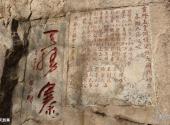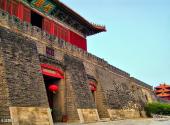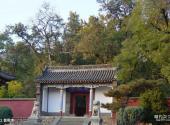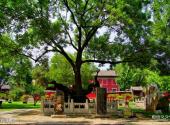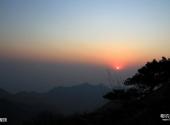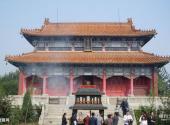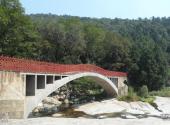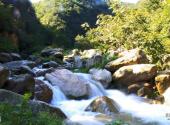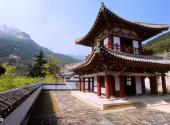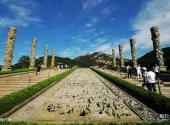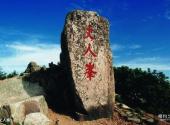
Scenic spot introduction:
Mount Tai is the first of my country's "Five Sacred Mountains" and is known as the "No. 1 Mountain in the World". It is one of the ten most beautiful and stunning mountains in China. With an altitude of 1,532.7 meters and an area of 426 square kilometers, it is majestic and magnificent, and is known as China's "National Mountain". Mount Tai faces the Yellow Sea to the east, the Yellow River to the west, and is surrounded by the Wenshui River. It faces the holy city of Qufu in front and the spring city of Jinan in the back. It stands majestically in the east of China with its towering momentum and is known as the most respected of the Five Sacred Mountains in ancient and modern times. Mount Tai is famous for its magnificent scenery. The overlapping mountains, heavy shapes, the setting of the pines and rocks, and the changes in the clouds and smoke make it bright in its majesty and magical in its tranquility.Mount Tai is not only a sacred mountain worshipped by emperors of all dynasties, but also a spiritual symbol of the Chinese nation and a microcosm of Chinese history and culture. Over thousands of years, twelve emperors have come to Mount Tai to offer sacrifices to the gods. Confucius left behind the admiration that "climbing Mount Tai makes the world look small", and Du Fu left behind the eternal masterpiece "I will climb to the top and look down on all the mountains".
Attractions distribution:
There are 156 peaks, 138 cliffs and ridges, 72 famous caves, 72 strange rocks, 130 streams and valleys, 64 waterfalls and pools, 72 famous springs, more than 10,000 ancient trees, 42 ancient sites, 13 ancient tombs, 58 ancient buildings, more than 2,500 stone carvings from past dynasties, 14 cave statues, 12 modern and contemporary cultural relics, and more than 10,000 cultural relics collections in Taishan Scenic Area. Among them are Chengziya Site, the oldest existing stone tower - Simen Tower, Dawenkou Site, Lingyan Temple, Dai Temple , Qianfo Cliff Grottoes, Dragon and Tiger Pagoda, Nine-peaked Pagoda, Tomb of Feng Yuxiang , Tang Daguan Peak Stone Carvings, Northern Qi Jingshiyu The Diamond Sutra has been announced by the State Council as a national key cultural relic protection unit. Sunrise at Mount Tai It is one of the wonders of Mount Tai and an important symbol of Mount Tai. Whenever it is foggy in the morning or evening, tourists standing on a higher mountain and looking in the direction of the light may see a colorful halo with blue inside and red outside on the misty curtain, reflecting the whole person in it, just like the colorful halo above the head of the Buddha, so it is called "Buddha's light" or "precious light". Riguan Peak , Baizhang Cliff, Immortal Bridge , Wudafu pine, Pine , Longtan Waterfall, Yunqiao Waterfall, Santan Waterfall and other famous scenic spots.Scenic spot qualifications:
National 5A scenic spot, World Cultural Heritage, World Natural Heritage, World GeoparkScenic spot features:
Photography, hiking, mountaineering, summer vacation, historical sites, celebrity stone carvings, famous mountainsScenic spot map:
Travel Notes of Travellers:
- Tiedan: Shandong Taishan ~ The Origin of Dongyi
- Travel guide: The 100 most beautiful scenic spots in China!
- Travel Guide: Jinan Three-Day Free Travel Guide 2017
travelling guideline:
1. There are currently four official ticket-selling entrances to Mount Tai, namely: the entrance to Hongmen Palace, the entrance to Tianwai Village (Tiandi Square), the entrance to Taohuayu, and the entrance to Tianzhu Peak.
2. When visiting Mount Tai, try to avoid taking a tourist bus up and down or taking the ropeway to and from. If your physical strength allows, it is best to climb the section from Zhongtianmen to Nantianmen to feel the magical charm of Mount Tai.
Tour route:
Taishan now has four lines:
1. Article 1: The most classic middle line of the Hongmen Road hike is actually the middle line of the Dengfeng Royal Road.
It refers to starting from Dai Temple (Dongyue Temple) → Tianmen → Confucius’s landing place → Red Gate → Zhongtian Gate → Nantian Gate → Jade Emperor Summit
2. The second one is the mountain ring road that goes up the mountain by car.
Tianwai Village (Tiandi Square) → Huanshan Road → Zhulin Temple → Huangxi River Reservoir → Zhongtianmen → Nantianmen → Yuhuangding
3. The third one is from the mountain pass on the northwest side, the entrance to Taohuayuan, which is a road around the mountain.
Entrance to Taohuayu → Mountain Ring Road → Colorful Stone Creek → Red Phosphorus Fish Sanctuary → Taohuayuan Cableway → Nantianmen → Yuhuangding
4. The fourth is the direction of the mountain pass on the northeast side, which is generally called Tianzhu Peak, which is the back mountain.
Because many people climb from the front mountain and go down this road, they can also go up the mountain from this side and go down from the front.
Tianzhu Peak → Impression Taishan (Performance Venue of the Zen Ceremony) → Carp Back → Big and Small Tianzhu Peaks → Shihe → Yao Guanding → Beitianmen → Riguan Peak → Jade Emperor Peak
Best time to visit:
The best time to visit Mount Tai is from May to November, and autumn is the best time to watch the sunrise. The sunset at the top of Mount Tai is more attractive than the sunrise. It is said that you can see the Yellow River when the weather is good. The scenery is amazing only when it snows in winter. Don't give up climbing easily on rainy days, because you can often see the wonder of sea of clouds on the mountain at this time, and you will be even luckier if you encounter the sunrise with the sea of clouds.
Shopping recommendations:
Local specialties: Taishan's four famous medicines (Taishan Polygonum multiflorum, Taishan four-leaf ginseng, Taishan Lithospermum officinale, Taishan Polygonatum sibiricum); Taishan's four treasures (Taishan red Ganoderma lucidum, Taishan ginseng, Taishan Polygonum multiflorum, Taishan Achyranthes bidentata); Taishan mushrooms; Taishan pancakes; Taishan strange stones; Taishan peach wood products (peach wood swords, peach wood walking sticks, etc.); Taishan walnuts, Taishan hawthorns, Taishan red apricots, Taishan beauty pears, Feicheng peaches, Taishan chestnuts, Ningyang dates, and Taishan daughter tea.
Special delicacies: Taishan pancakes, Taishan Fanzhen donkey oil fire cakes, Taishan red-scaled fish, and Taishan’s three beauties (cabbage, tofu, and water).
Scenic spot map:
Scenic spot location:
China > Shandong Province > Tai'an City > Taishan District
How to get there:
Bus routes: Line 3 (ordinary bus) fare is 1 yuan; Line K3 (air-conditioned bus) fare is 2 yuan; the starting and ending stations of these two bus routes are Hongmen and Tianwai Village respectively, both of which are mountain climbing routes, Hongmen is a walking route, and Tianwai Village is a car route.
In addition, there are bus No. 4, bus No. K4, bus No. 9 and bus No. K9 that can reach the station directly.
Scenic area map:
Click to expand the scenic area map
Shandong Mount Tai Ticket Price:
Peak season (February 1st - November 30th): 125 yuan; off-season (December 1st - January 31st of the following year): 100 yuan.
Bixia Temple :5 yuan
Dai Temple :20 yuan
Red Gate Palace :5 yuan
Puzhao Temple :5 yuan
Queen Mother Pond :5 yuan
(cableway) Zhongtianmen one Nantianmen Price: 80 yuan per person for one way, 140 yuan per person for round trip; Nantianmen Price: 80 yuan per person for one way and 140 yuan per person for round trip. Nantianmen Price: 20 yuan per person for one way, 40 yuan per person for round trip
(Ticket Discount)
1. Students and senior citizens over 60 years old can enjoy the discount of 60 yuan/person and 50 yuan/person in peak and off-season respectively.
2. Active military personnel, disabled revolutionary soldiers, disabled people, children (under 1.2 meters tall), and senior citizens over 70 years old can enter the mountain free of charge;
3. Teachers, model workers, heroes, and moral models at the provincial and ministerial levels and above enjoy ticket discounts of RMB 100 per person in the peak season and RMB 80 per person in the off-season.
Scenic area opening hours:
Open all day, but the ropeway opening hours vary.
(1) Zhongtianmen Taohuayuan Cableway: (April 16 to October 15) 8:30-17:30; (October 16 to April 15 of the following year) 8:30-17:00.
(2) Houshiwu Cableway: (April to October) 8:30-16:00, (November to March) closed during the winter fire prevention period; the one-way operating time of the cableway is 8-15 minutes; in addition, the operating hours of the cableway will be affected by the weather, so please refer to the actual operating hours of the cableway ticket office.



